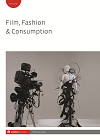- Home
- A-Z Publications
- Film, Fashion & Consumption
- Previous Issues
- Volume 8, Issue 1, 2019
Film, Fashion & Consumption - Volume 8, Issue 1, 2019
Volume 8, Issue 1, 2019
-
-
Glamour studies: The state of the field
More LessThis article, by the author of Glamour: A History in 2008, reassesses his own book and discusses the books of three other authors who in the last ten years have published analyses of glamour. Glamour in Six Dimensions in 2009, by Judith Brown, connects glamour to literary modernism, while Carol Dyhouse’s book Glamour: Women, History, Feminism (2010) provides a social history of feminine glamour in Britain, mainly between the 1920s and the 1960s. In The Power of Glamour in 2013, Virgina Postrel attempts to theorize glamour as a ‘non-verbal rhetoric’ centred on dreams of escape and transformation. Postrel’s argument is judged to be flawed in part because it lacks the materiality of Brown, the sharp gender focus of Dyhouse and the class-based historical approach of Gundle. It is argued that studies of glamour must start from what has generally been understood by the term. Theoretical advances may be achieved when social theory and material cultural approaches are more systematically brought together.
-
-
-
Costume, nostalgia and sexuality in murder mysteries by Maria Lang and their adaptations
More LessCrime novels by the prolific Swedish writer Maria Lang have been adapted into films during two periods: 1960–61 and 2013. This article situates the resulting films as media products of their time and examines the functions of costume and film style in the two adaptation periods. The article identifies nostalgia in Arne Mattsson’s 1960–61 films in how they contribute towards an old-fashioned film style. The string of films from 2013 engages in nostalgia-as-tourism and positions itself as ‘cosy crime’ by activating viewers partly as consumers and inviting them to a viewing mode of vintage window-shopping. The article locates nostalgic pastness in the assembling or dissembling of layered outfits, exploring this practice in conjunction with murder, vulnerability and culpability. Finally, the article traces attitudes towards sexuality and sexualization, addressing notions of respectability, the sexual liberation of contemporaneous Sweden (the ‘Swedish sin’) and points of contact between good taste, dress style and sexuality.
-
-
-
Giant: A study of costume design in transition
More LessBy Anne CocoThe 1956 movie Giant (George Stevens) provides an opportunity to examine costume design in the mid-twentieth century when both the film industry and the fan magazines that supported it were experiencing significant changes. Giant’s lead actress, Elizabeth Taylor, was increasingly a fixture in fan magazines, and her growing popularity and role in this movie provided a guise for writing about her extravagant lifestyle. This case study focuses on the contributions of the film’s two costume designers, Marjorie Best and Moss Mabry, fashion as a tool of promotion and the effect of Taylor’s lifestyle on a film’s publicity. It draws on the papers of director George Stevens, Best and Mabry as well as fan publications, and it follows the film from its inception and production to exhibition and promotion.
-
-
-
Shooting and shopping: Suiting Grant and dressing Saint
More LessBy Jan OlssonBy investigating the fashion aspects of Alfred Hitchcock’s North by Northwest (1959), this article argues for a heightened level of analytical attention to the many meanings of costume choices in the overall design of films. The text focuses on Cary Grant’s elegant, but famously manhandled suit as the film progresses, and how to understand its function and provenance in the grander scheme of ‘things’ in the film. In addition, Helen Rose’s discarded costume suggestions for Eva Marie Saint’s character are discussed – and how Hitchcock personally took on the role as personal shopper for Eve Kendall, Saint’s role. Further, the article highlights the collaborative nature of the film’s production and its pivotal ideas rather than argue for auteurist absolutism and a Hitchcock-alone approach to the film’s meaning. Ernest Lehman famously described his work on North by Northwest as an attempt to script ‘the Hitchcock picture to end all Hitchcock pictures’.
-
-
-
Reframing history: Federico Fellini’s Rome, fashion and costume
More LessCostume and fashion have been an integral component of Fellini’s artistic arsenal and have contributed greatly towards the layering and historical montage of his films. In this article, I will explore the historical implications of Fellini’s use of fashion and costume and the profound impact that they have had on the aesthetics and texture of his films. Through a close examination of fashion and costume, the chapter highlights Fellini’s contribution towards a new historiography and archaeology of both Rome/Italy and cinematic form. In the article, Fellini’s cinema, especially La Dolce Vita (The Sweet Life) in 1960 and Roma (Fellini’s Roma) in 1971, is approached from both the standpoint of fashion and from that of the cyclical temporality contained in Benjamin’s theory of fashion, so as to understand not only Fellini but also the contemporaneity of his approach.
-
-
-
Sleeves and Kosodes: Gate of Hell/costume/fashion/history
More LessThis article focuses on how the study of costume contributes to the interdisciplinary nature of fashion studies and film studies. How vital the study of costume is as intersection of history, fashion, politics, art and culture, can be answered through exploring the costumes in Kinugasa Teinosuke’s 1953 Japanese period film, Jigokumon (Gate of Hell) (1953). The reality that fashion, economies. technologies, inventions, identities and politics are inextricably entwined and that film costume must reflect that consolidation is complexly evident in the film.
-
-
-
Book Review
More LessUndressing Cinema: Clothing and Identity in the Movies, Stella Bruzzi (1997) London: Routledge, 226 pp., ISBN 0415139570, paperback, £22.49
-
Most Read This Month


